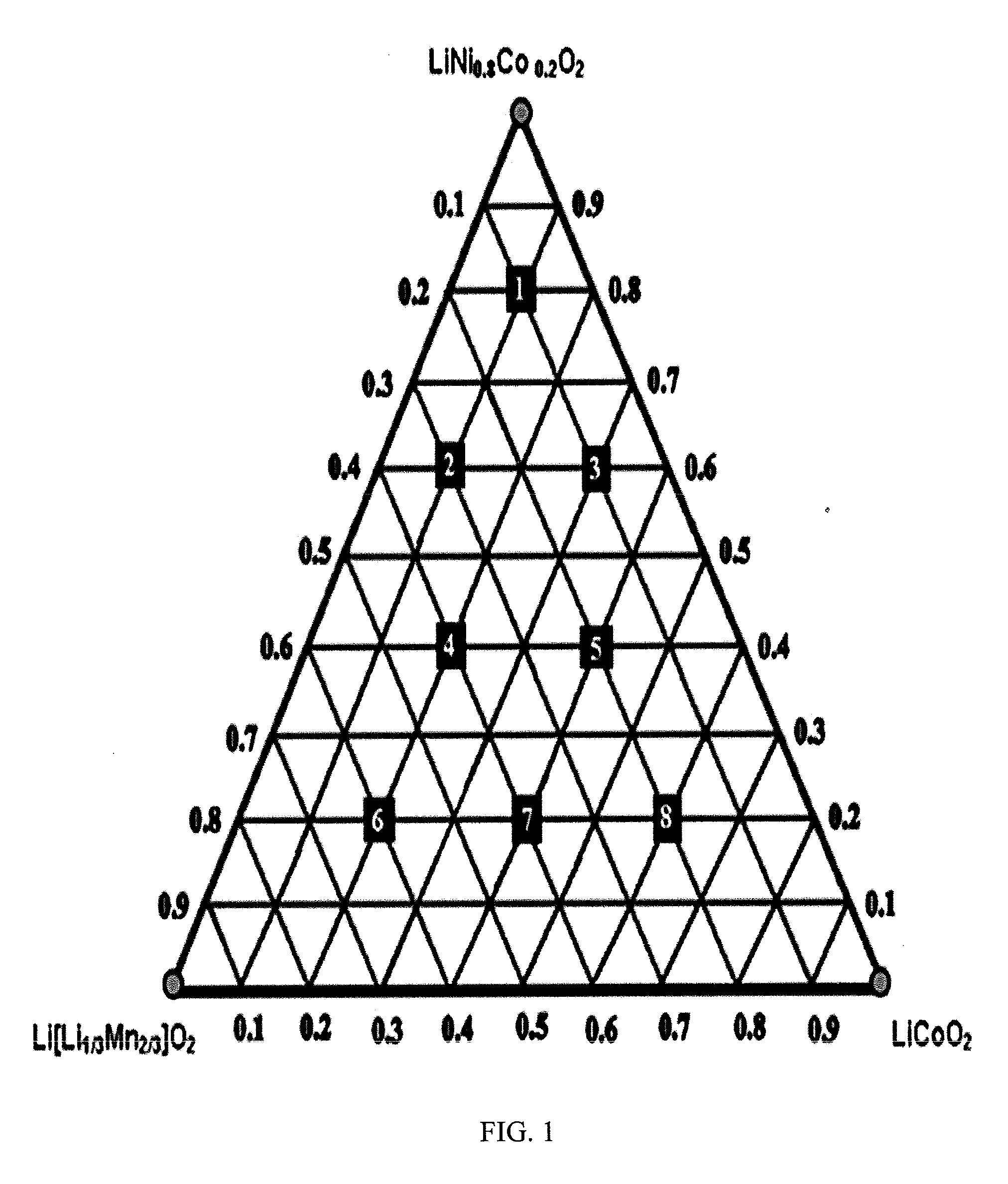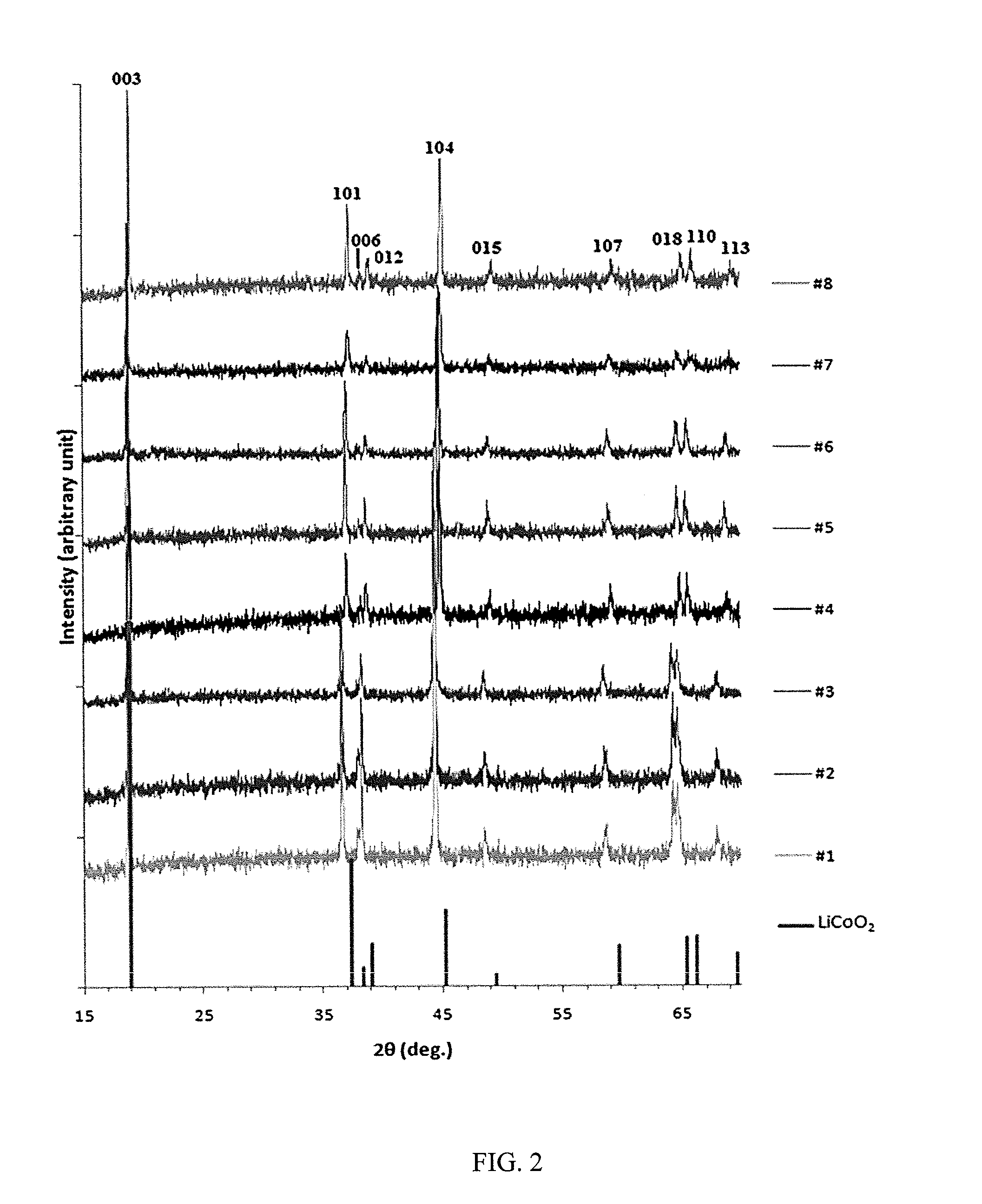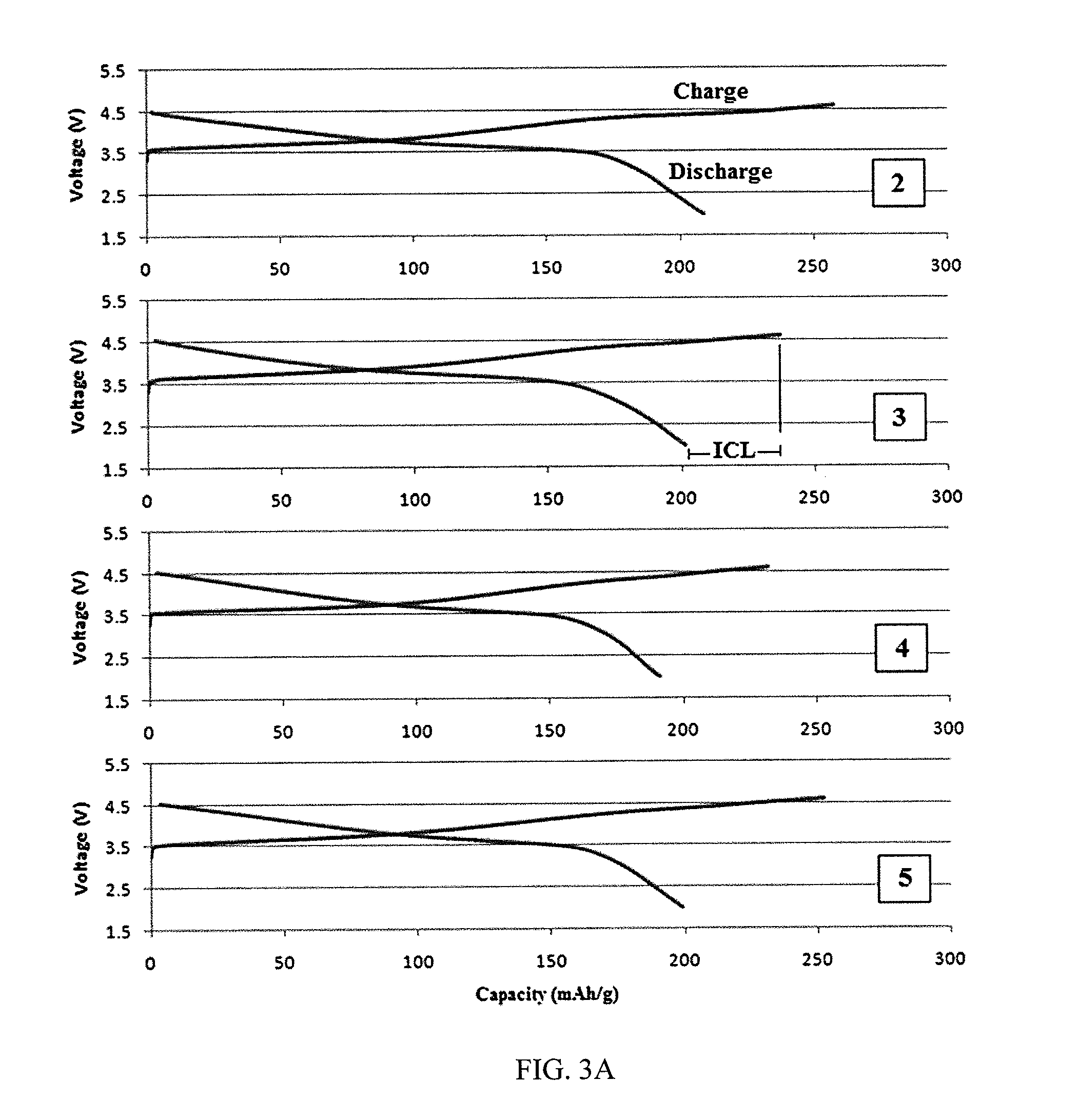LAYERED COMPOSITE MATERIALS HAVING THE COMPOSITION: (1-x-y)LiNiO2(xLi2Mn03)(yLiCoO2), AND SURFACE COATINGS THEREFOR
a composite material and composition technology, applied in the field of layered oxide composite materials, can solve the problems of low discharge capacity, low efficiency, and high cost, and achieve the effect of high discharge capacity
- Summary
- Abstract
- Description
- Claims
- Application Information
AI Technical Summary
Benefits of technology
Problems solved by technology
Method used
Image
Examples
example 1
(1-x-y)LiNi0.8Co0.2O2xLi2MnO3.yLiCoO2
[0050]Reference will now be made in detail to the present embodiments of the invention, examples of which are illustrated in the accompanying drawings. Turning now to FIG. 1, shown is a ternary composition diagram where points were chosen within the diagram in search of trends and to develop an optimized material. Preliminary characterization such as XRD was performed on all samples to show that single-phase materials were being made, but more extensive techniques such as differential scanning calorimetry were limited to the most promising materials.
[0051]The lever rule can be applied to determine the composition of a material at any point of a ternary composition diagram. The perpendicular distance from one of the points is an indication of how much of the corresponding material is present. The compositions of the sample points are given in TABLE 1 for (1-x-y)LiNi0.8Co0.2O2.xLi2MnO3.yLiCoO2.
TABLE 1LocationComposition1Li1.033Mn0.067Ni0.640Co0.26...
example 2
Li(3+x) / 3Ni(1-x-y)COyMn2x / 3O2
[0057]The Li(3+x) / 3Ni(1-x-y)CoyMn2x / 3O2 system is a ternary system with components (1-x-y)LiNiO2.xLi2MnO3.yLiCoO2. This system was created because it contains every combination of Ni, Co, and Mn when the Mn is in Li2MnO3 form. This means that every composition in the previously examined system, (1-x-y)LiNi0.8Co0.2O2.xLi2MnO3.yLiCoO2, can be represented by a formula in this new representation. Materials in the systems Li(4-x) / 3Mn(2-x) / 3Nix / 3Cox / 3O2 and (1-x-y)LiNi1 / 2Mn1 / 2O2.xLi[Li1 / 3Mn2 / 3]O2.yLiCoO2 can only be approximated because they have components containing Mn that is not in the Li2MnO3 form. The ternary diagram and the points selected for test are shown in FIG. 4. The preliminary sample points were chosen to make up a simplex centroid design that ensured complete coverage of the composition diagram and could facilitate further mixing modeling if simple trends were observed. Modeling was difficult for the (1-x-y)LiNi0.8Co0.2O2.xLi2MnO3.yLiCoO2 syst...
example 3
[0063]Li1.222Mn0.444Ni0.167Co0.167O2 has been identified hereinabove as high performance material. In what follows, the surface of this material has been modified by coating with different metal oxides (MO) [MO=Al2O3, AlPO4, ZnO, CeO2, ZrO2, or SiO2], which showed improvement in electrochemical performance. Coating of metal oxides was performed by a solution based method. Li1.222Mn0.444Ni0.167Co0.167O2 was dispersed in a solution of corresponding metal nitrates (Al(NO3)3, Zn(NO2)2, Zr(NO3)2, NH4Ce(NO3)6, (NH4)2PO4) and SiC8H2COO4 (as a Si source) in deionized water, and stirred for 20 min. AlPO4 coatings were generated utilizing aluminum nitrate and diammonium phosphate as precursors. Ammonium hydroxide solution was then dropwise added to the solution under stirring to precipitate the corresponding metal hydroxides, and coated powder was recovered by filtration and dried overnight. These samples were further annealed at 350° C. (for Al2O3, ZnO, ZrO2, SiO2), 500°...
PUM
| Property | Measurement | Unit |
|---|---|---|
| Temperature | aaaaa | aaaaa |
| Temperature | aaaaa | aaaaa |
| Temperature | aaaaa | aaaaa |
Abstract
Description
Claims
Application Information
 Login to View More
Login to View More - R&D
- Intellectual Property
- Life Sciences
- Materials
- Tech Scout
- Unparalleled Data Quality
- Higher Quality Content
- 60% Fewer Hallucinations
Browse by: Latest US Patents, China's latest patents, Technical Efficacy Thesaurus, Application Domain, Technology Topic, Popular Technical Reports.
© 2025 PatSnap. All rights reserved.Legal|Privacy policy|Modern Slavery Act Transparency Statement|Sitemap|About US| Contact US: help@patsnap.com



